Hyundai IONIQ 5 vs Tesla Model 3 – Which one offers the better deal?
Compare performance, boot capacity, efficiency and price at a glance.
Find out which car is the better choice for you – Hyundai IONIQ 5 or Tesla Model 3?
Costs and Efficiency:
When it comes to price and running costs, the biggest differences usually appear. This is often where you see which car fits your budget better in the long run.
Tesla Model 3 has a somewhat advantage in terms of price – it starts at 34300 £, while the Hyundai IONIQ 5 costs 38500 £. That’s a price difference of around 4208 £.
In terms of energy consumption, the advantage goes to the Tesla Model 3: with 13.20 kWh per 100 km, it’s a bit more efficient than the Hyundai IONIQ 5 with 15.60 kWh. That’s a difference of about 2.40 kWh.
As for range, the Tesla Model 3 performs somewhat better – achieving up to 702 km, about 132 km more than the Hyundai IONIQ 5.
Engine and Performance:
Power, torque and acceleration say a lot about how a car feels on the road. This is where you see which model delivers more driving dynamics.
When it comes to engine power, the Hyundai IONIQ 5 has a clearly perceptible edge – offering 650 HP compared to 460 HP. That’s roughly 190 HP more horsepower.
In acceleration from 0 to 100 km/h, the Tesla Model 3 is a bit quicker – completing the sprint in 3.10 s, while the Hyundai IONIQ 5 takes 3.50 s. That’s about 0.40 s faster.
In terms of top speed, the Tesla Model 3 performs barely noticeable better – reaching 262 km/h, while the Hyundai IONIQ 5 tops out at 260 km/h. The difference is around 2 km/h.
There’s also a difference in torque: Hyundai IONIQ 5 pulls to a small extent stronger with 770 Nm compared to 660 Nm. That’s about 110 Nm difference.
Space and Everyday Use:
Whether family car or daily driver – which one offers more room, flexibility and comfort?
Both vehicles offer seating for 5 people.
In curb weight, Tesla Model 3 is hardly perceptible lighter – 1822 kg compared to 1955 kg. The difference is around 133 kg.
In terms of boot space, the Tesla Model 3 offers somewhat more room – 594 L compared to 520 L. That’s a difference of about 74 L.
When it comes to payload, Hyundai IONIQ 5 noticeable takes the win – 530 kg compared to 333 kg. That’s a difference of about 197 kg.
Who wins the race?
The Hyundai IONIQ 5 proves to be has the upper hand and therefore becomes our DriveDuel Champion!
Hyundai IONIQ 5 is the better all-rounder in this comparison.
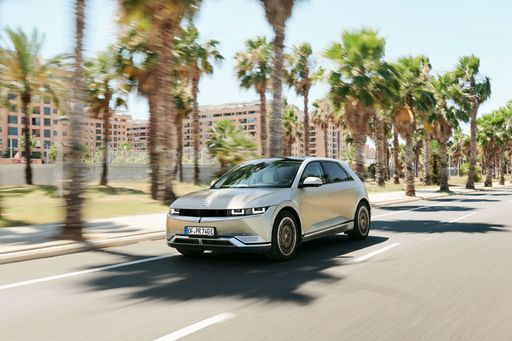
Hyundai IONIQ 5
Hyundai IONIQ 5
The Hyundai IONIQ 5 showcases a bold and futuristic design that captures attention with its striking facade and sharp lines. This electric vehicle offers an impressive blend of performance and efficiency, making it a compelling choice for environmentally conscious drivers. Inside, the spacious and tech-forward interior provides a comfortable and engaging driving experience for both driver and passengers.
details @ hyundai.news
@ hyundai.news
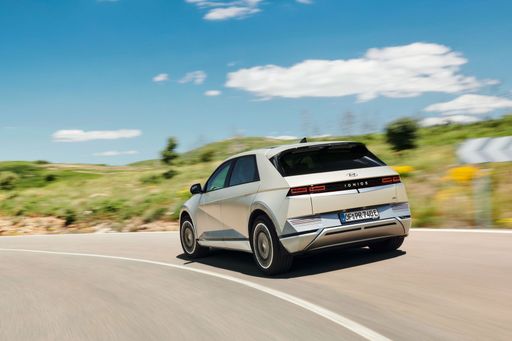 @ hyundai.news
@ hyundai.news
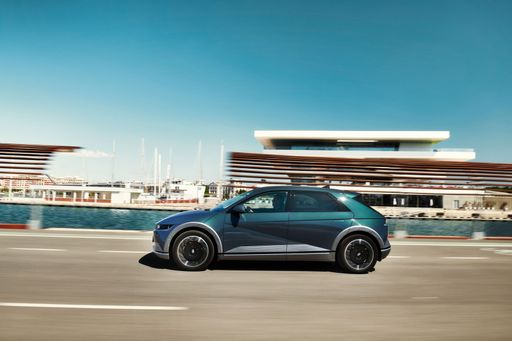 @ hyundai.news
@ hyundai.news
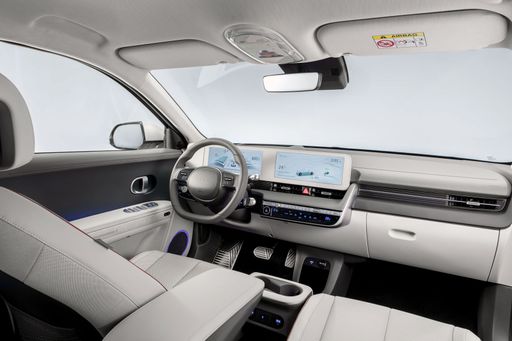 @ hyundai.news
@ hyundai.news
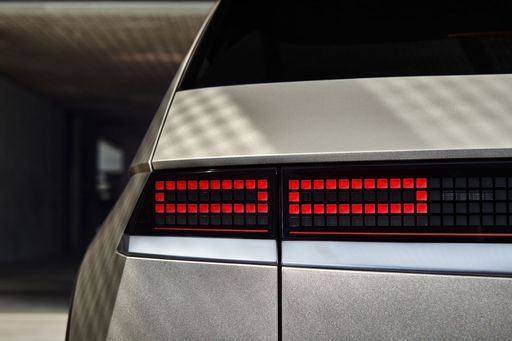 @ hyundai.news
@ hyundai.news
Tesla Model 3
The Tesla Model 3 stands out in the electric vehicle market with its sleek design and impressive performance capabilities. It offers a seamless driving experience that combines advanced technology with minimalistic interiors, creating a futuristic feel on the road. Additionally, its range and charging infrastructure make it a practical choice for both city commuting and longer journeys.
details @ tesla.com
@ tesla.com
 @ tesla.com
@ tesla.com
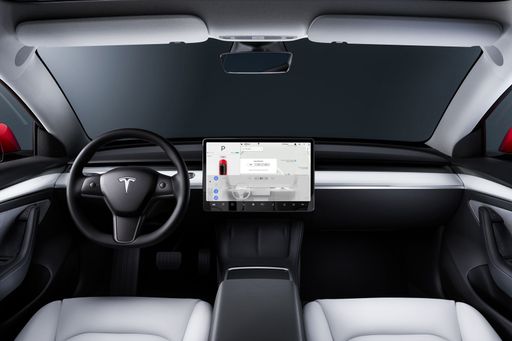 @ tesla.com
@ tesla.com
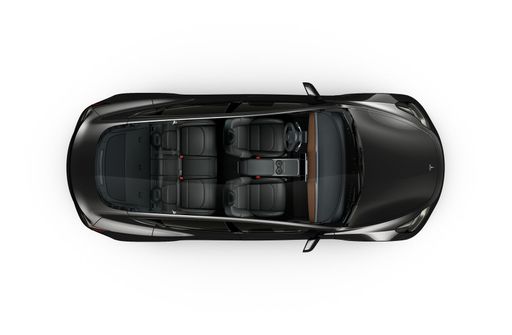 @ tesla.com
@ tesla.com

|

|
|
|
|
Costs and Consumption |
|
|---|---|
|
Price
38500 - 64200 £
|
Price
34300 - 50100 £
|
|
Consumption L/100km
-
|
Consumption L/100km
-
|
|
Consumption kWh/100km
15.6 - 21.2 kWh
|
Consumption kWh/100km
13.2 - 16.7 kWh
|
|
Electric Range
440 - 570 km
|
Electric Range
513 - 702 km
|
|
Battery Capacity
63 - 84 kWh
|
Battery Capacity
64.5 - 79 kWh
|
|
co2
0 g/km
|
co2
0 g/km
|
|
Fuel tank capacity
-
|
Fuel tank capacity
-
|
Dimensions and Body |
|
|---|---|
|
Body Type
SUV
|
Body Type
Sedan, Hatchback
|
|
Seats
5
|
Seats
5
|
|
Doors
5
|
Doors
4 - 5
|
|
Curb weight
1955 - 2275 kg
|
Curb weight
1822 - 1929 kg
|
|
Trunk capacity
480 - 520 L
|
Trunk capacity
594 L
|
|
Length
4655 - 4715 mm
|
Length
4720 - 4724 mm
|
|
Width
1890 - 1940 mm
|
Width
1850 mm
|
|
Height
1585 - 1605 mm
|
Height
1431 - 1440 mm
|
|
Max trunk capacity
1540 - 1580 L
|
Max trunk capacity
-
|
|
Payload
385 - 530 kg
|
Payload
303 - 333 kg
|
Engine and Performance |
|
|---|---|
|
Engine Type
Electric
|
Engine Type
Electric
|
|
Transmission
Automatic
|
Transmission
Automatic
|
|
Transmission Detail
Reduction Gearbox
|
Transmission Detail
Reduction Gearbox
|
|
Drive Type
Rear-Wheel Drive, All-Wheel Drive
|
Drive Type
Rear-Wheel Drive, All-Wheel Drive
|
|
Power HP
170 - 650 HP
|
Power HP
283 - 460 HP
|
|
Acceleration 0-100km/h
3.5 - 8.5 s
|
Acceleration 0-100km/h
3.1 - 6.1 s
|
|
Max Speed
185 - 260 km/h
|
Max Speed
201 - 262 km/h
|
|
Torque
350 - 770 Nm
|
Torque
420 - 660 Nm
|
|
Number of Cylinders
-
|
Number of Cylinders
-
|
|
Power kW
125 - 478 kW
|
Power kW
208 - 338 kW
|
|
Engine capacity
-
|
Engine capacity
-
|
General |
|
|---|---|
|
Model Year
2024
|
Model Year
2023 - 2024
|
|
CO2 Efficiency Class
A
|
CO2 Efficiency Class
A
|
|
Brand
Hyundai
|
Brand
Tesla
|
What drive types are available for the Hyundai IONIQ 5?
The Hyundai IONIQ 5 is available as Rear-Wheel Drive or All-Wheel Drive.
The prices and data displayed are estimates based on German list prices and may vary by country. This information is not legally binding.
